By Richard MacLean
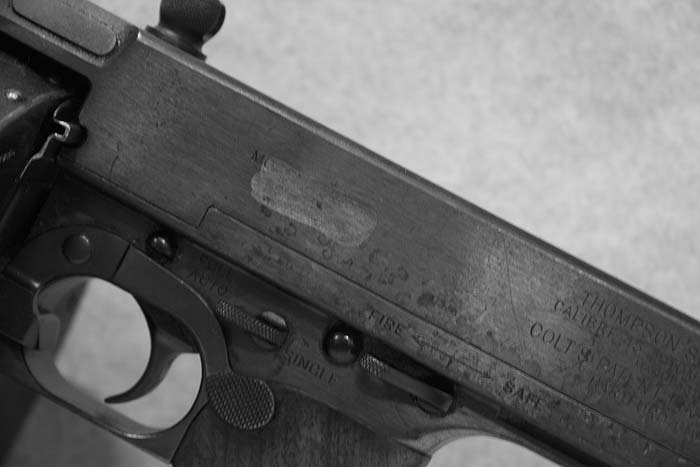
The Colt Thompson submachine gun has become the icon of organized crime and the gangsters of the 20s and 30s. Indeed, its use by criminals who made the twenties roar was a leading cause of the National Firearms Act of 1934.
Not surprisingly, many of the Thompsons used by gangsters had their serial numbers obliterated. This article examines the practice of serial number removal by criminals and their recovery by forensic firearm examiners. Gangsters of that period did not know it, but there is a hidden number on all early Thompsons. We will describe how to reveal these numbers using an amnesty-registered gangster Thompson and why even today, these techniques can shed new information about the history of these nearly century-old submachine guns.
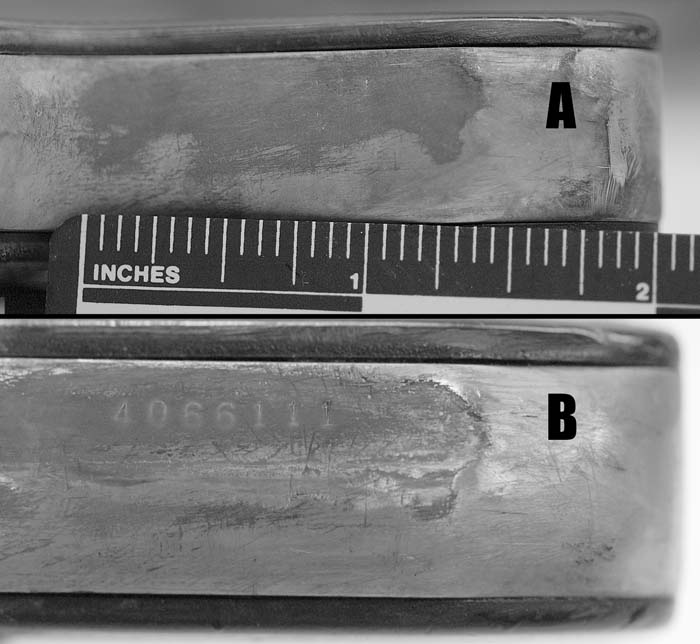
Crime: Some Things Never Change
Law enforcement organizations are extremely interested in weapons’ serial numbers for obvious reasons. The numbers may link criminals to other crimes and specifically to robberies that may have been the source of the weapons in the first place. Of growing significance is that their identification may lead to patterns involving criminal activities such as straw purchases and dealers who may be supplying guns to organized crime networks. The mere presence of an obliterated serial number on a crime gun is a good indicator of trafficking because it shows that someone in the chain of possession presumed that the gun will be used in a future crime, may have to be discarded and might be recovered by the police.
Tracing of crime gun serial numbers has been around since serial numbers first appeared on guns. With respect to Thompsons, two of the more famous cases involved the tracking of Thompsons supplied to the Irish Republican Army in 1921 and the forensic examination of the Saint Valentine’s Day Massacre weapons.
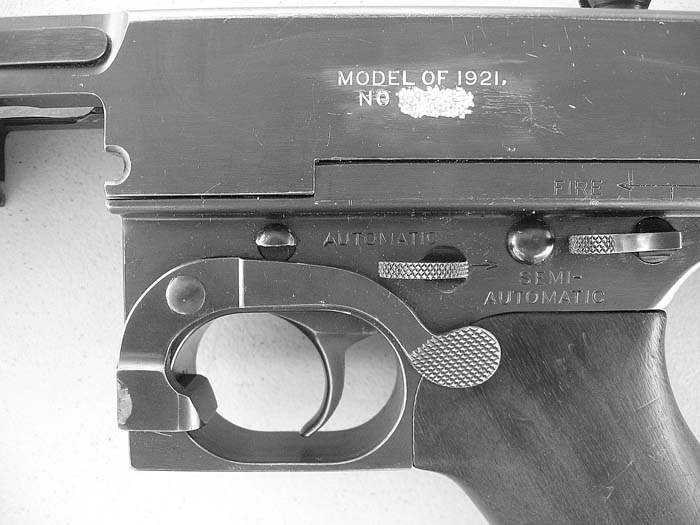
Fast forwarding to this century, a report by the Bureau of Alcohol, Tobacco and Firearms that analyzed 88,570 trace requests made by law enforcement officials in 44 communities found that crime guns are now predominantly handguns (77 percent) and, among handguns, mostly semiautomatic pistols which alone account for half (50 percent) of all crime guns traced. Almost 10 percent of the traces involved handguns with obliterated or partially obliterated serial numbers. The proportion of handguns with obliterated serial numbers is nearly twice as large for semiautomatic pistols (11.3 percent) as for revolvers (6.3 percent). Obliteration is more common on guns used in crimes committed by individuals under 24.
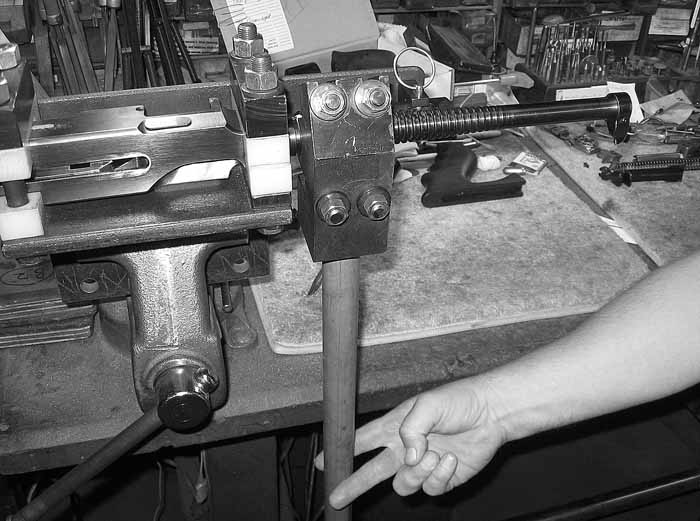
Although obliterated serial numbers on guns are relatively common, prosecutions are infrequent. One 2003 study found that between 2000 and 2002, Federal prosecutors throughout the nation filed only 259 cases against individuals in possession of a gun with an obliterated serial number. Marc Dupre of FoCoSS Forensics states, “The lack of follow-through is probably due to the difficulty prosecutors have in proving that the individual knowingly obliterated the numbers and/or understood its illegality (a Federal felony punishable by five years). Another factor may be that the prosecutors typically have a robust shopping list of other crimes which would send these individuals to prison.”
Obliteration Methods and Recovery Techniques
The techniques outlined here are commonly known and documented in publicly available books and articles. This information was reviewed by practicing firearms examiners and certain facts not commonly known are not revealed.
The most common form of serial number removal is surface grinding or filing. Over the past 13 years, Marc Dupre has rarely seen other techniques such as peening, chiseling, center punching, drilling or welding. Sometimes specific numbers will be altered by over stamping such as changing a 6 to an 8 or a 1 to a 4. A lot of 8s and 4s are a red flag.
Even though the numbers have been totally removed, at least visually, the crystalline structure of the metal underneath remains unaltered. The serial numbers can sometimes be recovered by techniques that differentiate between the unaltered and altered crystalline structure directly beneath the original numbers. The most common method is to first polish the area and then etch the prepared surface. The altered crystalline areas etch at a different rate than the surrounding metal, revealing the original numbers.
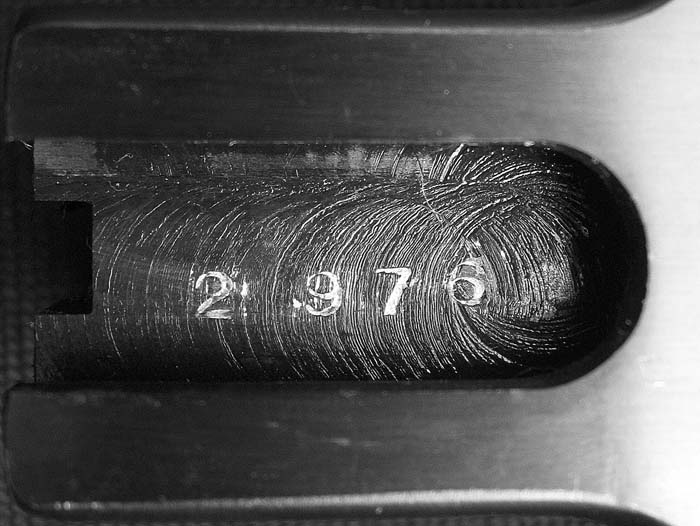
There are a dozen different etching reagents, depending on the type of metal (e.g., steel, aluminum, brass). There are also electrochemical, ultrasonic, magnetic and heat techniques to name a few, and because this is a visual examination, the right type of lighting and photographic enhancements help tremendously. Needless to say, there is as much art as science involved in successful serial number recovery.
Marc Dupre states, “Success rates as high as 80 percent have been reported in the literature. Much depends on the method used to obliterate the number in the first place; some are more effective that others and this is an area we keep within the profession, for obvious reasons.”
Overlooking the Obvious
Modern weapons typically have the serial number in more than one place. A state police firearms examiner who wished to remain anonymous for this article states, “Criminals can be incredibly stupid. I have seen guns such as Glocks with the stamped metal serial number strip removed from the frame, but the matching numbers on the barrel and slide unaltered.”
His oddest case of “What were they thinking?” involved Smith & Wesson Model 66 stainless steel revolvers. “When this model first came out about 20 years ago, they were extremely popular and many were stolen. Someone was professionally welding up the serial numbers visible on the frame and re-stamping new numbers. It was difficult even for forensic examiners to tell that these were not the original numbers, except for one glaring mistake – the secondary had not been altered near the cylinder yoke.”
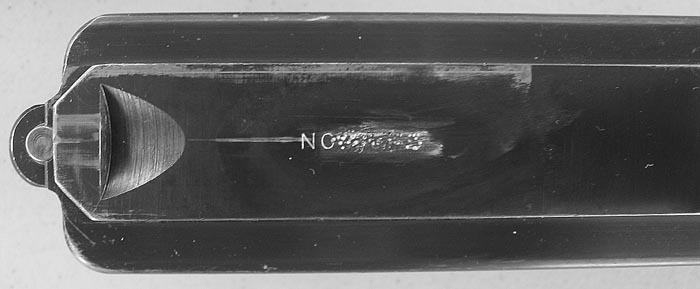
But even century-old guns can have multiple serial number locations. German manufacturers in particular seemed to be obsessed with adding the last few digits of the complete number to every little part. The classic example is the Luger P08. In fact, all matching numbers is a major factor for collectable guns.
Some of this numbering is to maintain hand-fitted components or parts matched for cosmetic reasons, but in the case of rifle bolts, for example, it is absolutely critical to match the correct bolt to the gun to ensure proper headspace. Sometimes assembly numbers that have no relationship to the serial number are also used because a number had yet to be assigned.
In the case of Thompsons, all of these factors came into play. Early Colt guns were marked on the left side of the receiver and on the underside of the of the trigger frame. Model 1928 and 1928A1 Thompsons were also so marked. Some M1 and M1A1 Thompsons had trigger frame serial numbers, but that practice was terminated later in World War II. Specifications after 1943 specified “receiver-only markings.” The reason is obvious for military guns: guns sent back for repair soon were mismatched.
The first thousand Thompsons had the number on the ramp face of the chamber on the barrel. It is sometimes possible to see this from the extractor cutout in the receiver. Some specially-ordered guns had serial numbers placed in visible locations such as on the Cutts Compensator so that the numbers could be observed when stored in a gun rack.
There are also matching assembly numbers placed under both the butt plate and butt stock. Gordon Herigstad, author of Colt Thompson Serial Numbers, is aware of at least one occasion where these numbers were also removed even though they were just assembly numbers. Its accompanying C drum’s serial number was obliterated as well.
But the only guaranteed way to uncover the original serial number was through barrel removal and examination of the flat area on the receiver under the forearm. Not only were gangsters oblivious to this hidden number, they did not have the tools or knowledge to reveal it. Indeed, special tools are required to complete this operation without marring, or in any way damaging, these valuable guns.
Douglas W. Richardson of Malibu, California, manufactures the required barrel wrench and receiver vice. The process is straightforward as shown by gunsmith Nelson Ford of Phoenix, Arizona, on an amnesty-registered gun with an IRS-issued number 6377-D. The original receiver markings on this gun are peened off and the trigger frame numbers both peened and ground off. Gordon Herigstad correctly predicted beforehand that the serial number would be under 3,000 because of its “early markings” (i.e., “Full Automatic” and “Semi Automatic” spelled out on the trigger frame).
Like many Thompsons of that period, Auto-Ordnance had no specific information on what is now known to be serial number 2976. Colt manufactured the gun but they were a subcontractor to Auto-Ordnance and did not maintain detailed records on the guns that they did not own and, of course, the original Auto-Ordnance is out of business.
The current owner, Charles Olsen jokes, “I was hoping it was sold to a hardware store outside Chicago.” Indeed, a few of these stores were the source of many of the crime guns of that era. With the number revealed, maybe someday the truth will be known.
History to be Uncovered
Pulling the barrel on a Thompson and discovering the original serial number is more than just an exercise in curiosity. Obviously, the criminals are long since dead, as are the cases that may have involved these guns. Discovering the original serial number is not about putting people in jail: it is about uncovering lost history. These guns represent the very symbol of a bygone terror that still stirs the imagination today.
Gordon Herigstad states, “There were approximately 200 of the 495 Thompsons – known as the Rorke guns – that were destined for the Irish Republican Army. You can usually identify them since a chisel was used to obliterate the serial numbers. In addition, Peter Von Frantzius was an armorer who supplied Thompsons with ground-off serial numbers to gangsters in the Chicago area. Overall, however, there are relatively few – possibly a dozen or less – Thompsons in museums or in private collections with obliterated numbers.”
Some of these still hold secrets yet to be uncovered. For example, Herigstad describes two that he is aware of, “There is one in the New York City Police Museum reported to have been used on July 1, 1928 by Fred “Killer” Burke to murder Frankie (Uale) Yale who ran afoul of Al Capone. It was the first time a Thompson was used in New York gangland warfare and it is assumed to be directly linked to Al Capone. The visible serial numbers are ground off and the only real proof is that key bit of information which the museum does not have. I have the numbers of all the guns bought by Capone and can make the definite link.”
Marc Dupre examined several close-up photographs of this submachine gun and believes that the number could be restored, “You never know until you give it a try.” Ironically, its value as a piece of gangster history would actually decrease if such a restoration were to be attempted. The only way to both preserve its significance and trace its origin is to remove the barrel, document the number and re-attach the barrel.
Herigstad continues, “Another interesting gun is in the Rock Island Arsenal Museum in Illinois. One of the 17 Thompsons in their collection has obliterated numbers, and if I pulled the barrel, I could immediately tell if it is also one of the famous Chicago gangster guns. It was acquired locally in 1955 and without any descriptive history, but since Chicago is only 160 miles away, one can easily speculate there may be a connection. Hopefully someday history will be uncovered on these two Thompsons.”
(Thank you to Chuck Olsen, Gordon Herigstad, Marc Dupre and Nelson Ford for their assistance in the preparation of this article.)
| This article first appeared in Small Arms Review V12N9 (June 2009) |











